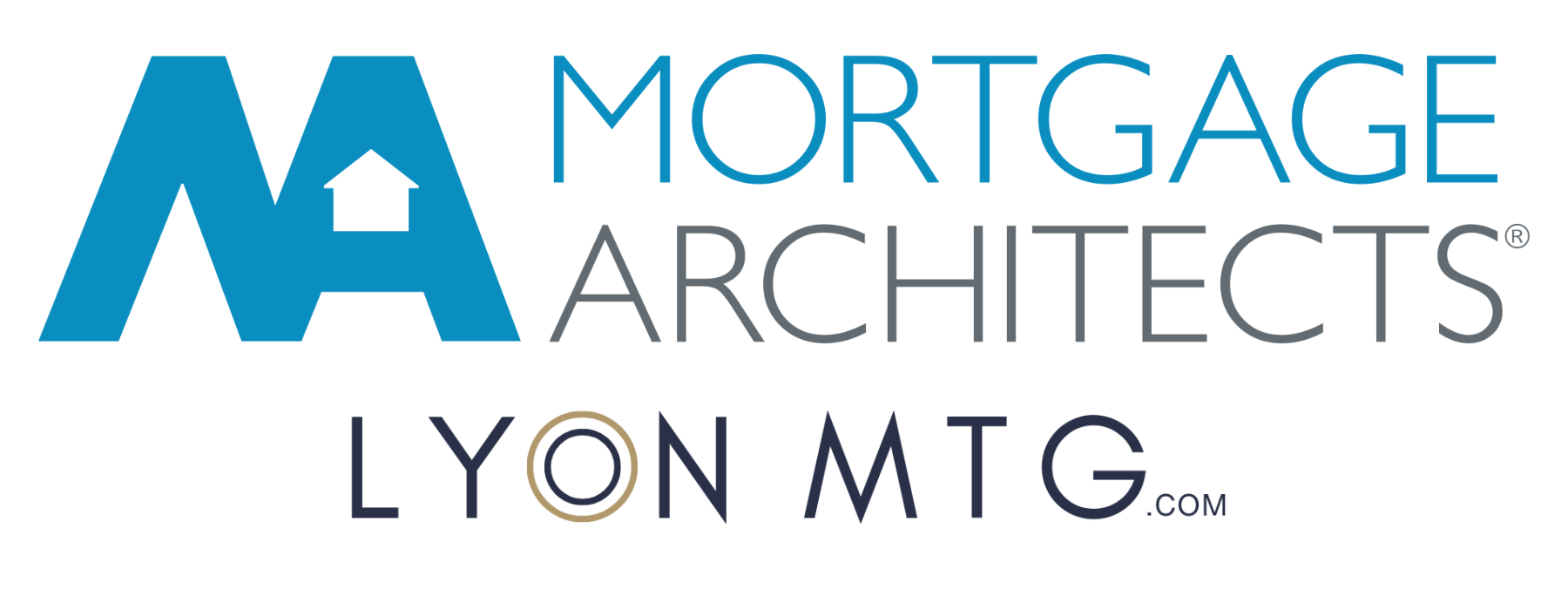Articles to keep you learning

If you own a property with a mortgage, you've probably heard the terms "renewal" and "refinance" thrown around. While both involve obtaining a new term for your mortgage, there are some important differences to understand. Let's break down what each one means and when you might use them. Understanding Mortgage Basics In Canada, when you take out a mortgage, the payments are typically spread over 25 to 30 years. This period is known as the amortization. However, unlike in the U.S., Canadians do not keep the same interest rate and payment terms for the entire amortization period. Instead, you have an initial term, usually 3 to 5 years, after which you need to renew into a new term. For example, if you have a 25-year mortgage with 5-year terms, you will need to renew your mortgage four times throughout its lifespan. It's also common to have a mix of different term lengths over the course of your mortgage. What is a Mortgage Renewal? A mortgage renewal occurs at the end of your mortgage term. When you renew, you start a new term with a new interest rate while keeping the remaining details of your mortgage the same. The key element here is that the mortgage charge registered on your property's title remains unchanged. A renewal is straightforward and typically does not involve any significant changes to your mortgage agreement other than a new interest rate. Think of it as hitting the "continue" button on your mortgage, but at new rates. What is a Mortgage Refinance? A mortgage refinance is different. When you refinance, you are making changes to your original mortgage agreement. This means paying off your existing mortgage and registering a new one on your property's title. Essentially, you are taking out a completely new mortgage for the same property. People commonly refinance to: Access the equity in their home for investments or major purchases Consolidate high-interest debt into their lower-rate mortgage Extend the amortization period to reduce monthly payments and improve cash flow Make significant changes to their mortgage structure It's important to note that refinancing is not allowed for insured properties (those with less than a 20% down payment at purchase). This means the maximum loan amount in a refinance is 80% of your property value. What About Switching Lenders? If you want to keep everything the same but switch lenders for a better rate, this is known as a transfer. A transfer is a type of renewal where the original mortgage charge is transferred from one lender to another. Depending on the lenders involved, you might be able to make minor changes (like extending the amortization or changing borrowers) without needing a full refinance. Why Timing Matters Your mortgage maturity date is when your current term ends. This is the ideal time to either renew or refinance. If you refinance or switch lenders before the maturity date, you will face a prepayment penalty. If you refinance, renew or transfer at maturity, there is no penalty. Real-World Example A homeowner with a $450,000 mortgage is reaching the end of their 5-year term. Their lender offers a renewal rate, but they also have $40,000 in high-interest credit card debt. Option 1: Renewal They accept the new term. Their mortgage stays the same. Their debt remains separate at high interest rates. Option 2: Refinance at Maturity They consolidate the credit card debt into the new mortgage. Their total monthly payments drop significantly, even after accounting for the new mortgage balance. In this situation, refinancing provides better cash flow and a simpler payment structure. Quick Summary Mortgage Renewal: Starts a new term for your existing mortgage Mortgage charge on your title stays the same Keeps all other terms the same aside from interest rate Can switch lenders at renewal through a transfer No penalty when done at maturity Mortgage Refinance: Pays off current mortgage and creates a new one New mortgage charge registered on your title Often resets the amortization period Can access equity or make structural changes Maximum 80% of property value for uninsured mortgages Incurs penalty if done before maturity Next Steps Understanding the difference between renewal and refinance helps you make informed decisions about managing your mortgage. If you have a renewal coming up or are considering accessing your home equity, now is a good time to explore your options. Whether you're looking to renew, refinance, or switch lenders, I'm here to help you navigate the process and find the best solution for your situation. Need help with your mortgage? Book a consultation or call 778-988-8409 . Glossary Amortization: The total time period over which you'll pay off your mortgage, typically 25-30 years in Canada. Insured Mortgage: A mortgage where the down payment was less than 20%, requiring mortgage default insurance to be added. Maturity Date: The end date of your current mortgage term, when you need to renew or refinance. Mortgage Charge: The legal registration of your mortgage on your property's title. Pre-payment Penalty: A fee charged by your lender if you pay off your mortgage before the end of your term. Refinance: Replacing your existing mortgage with a new mortgage, often with different terms or to access equity. Renewal: Starting a new term for your existing mortgage, typically just updating the interest rate. Term: The length of time your current mortgage contract is in effect, typically 3-5 years in Canada. Transfer: Moving your mortgage from one lender to another at renewal without changing other terms.

If you're buying a home with less than 20% down, you'll need something called an insured mortgage. Many borrowers find this confusing at first, especially since it doesn’t refer to insurance for you, the borrower. That’s why I have put together this straightforward breakdown so you understand what insured mortgages are, why they exist, and how they affect your purchase. What Is an Insured Mortgage? A mortgage must be insured when a borrower makes a down payment of less than 20% on a home purchase. The insurance protects the lender (not the borrower) in case the borrower defaults. The insurance is guaranteed by the federal government. So, why do we have this program? It allows borrowers to buy homes with smaller down payments and higher loan-to-value (LTV) ratios. Higher loan-to-value mortgages are inherently more risky because there is not much cushion if the housing market starts to decline. For example, if someone buys a $500,000 home with only 5% down ($25,000), they’ll need a $475,000 mortgage—this is a 95% LTV . If the market drops and the home’s value falls to $470,000, the mortgage would still be $475,000. If the borrower stopped making payments, the lender could lose money after selling the home and paying costs. That kind of loss, multiplied across thousands of borrowers, could threaten the stability of the entire banking system (as we saw in the U.S. in 2008). The mortgage insurance system is designed to prevent that scenario by spreading risk and keeping lenders protected. How Does the Insurance Work? You, the borrower, pay the insurance premium. It's typically added directly to your mortgage balance rather than paid upfront. The cost depends on your down payment size and amortization. Example: Purchase price: $500,000 Down payment: $25,000 (5%) Mortgage amount: $475,000 Insurance premium: 4.2% = $19,950 Total new mortgage: $494,950 The insurance does add cost, but insured mortgages usually offer slightly lower interest rates because the lender's risk is minimal. The rate savings don't fully offset the premium, but they help. The Insurer’s Role For insured mortgages, the insurer’s approval is the most important part of the process. If the insurer won’t approve the file, no lender can. Once the insurer signs off, we can typically find a lender to fund the loan. Canada has three mortgage insurers: CMHC (public) Sagen (private) Canada Guaranty (private) All of the insurers are backed by government guarantees and have to follow similar rules, but each has a few unique programs. Lenders usually choose the insurer, though I sometimes work with them to send a file to a specific insurer if it benefits the borrower. Qualification Rules Because insured mortgages are government-backed, the rules are strict: Debt ratios: 39% of your income can go toward your stress-tested mortgage payment, property taxes, heat, and half of condo fees 44% of your income can go toward the above plus your other debts Down payment: 5% on the first $500,000, 10% on the remainder Maximum purchase price: $1.5 million Amortization: Maximum of 25 years for most buyers; up to 30 years for first-time buyers who qualify under the new federal program Unlike with an uninsured mortgage, where lenders may have some flexibility if your income ratios are slightly above the limits, there is no discretion on an insured mortgage. If your ratios exceed the limits even a little bit, the insurer will decline the application. The Approval Process The process is similar to an uninsured mortgage, with one extra step: We submit your mortgage application to the lender of choice They do their initial review If that looks good, they package it up and send it to the insurer Once the insurer has reviewed and approved it, the file comes back to the lender for final review and approval Common Misunderstandings About Insured Mortgages Many borrowers are surprised to learn the following facts about insured mortgages: You do not need to be a first-time homebuyer to buy with less than 20% down You cannot buy an investment property with less than 20% down You can buy a second home with less than 20% down You cannot refinance an insured mortgage and keep the insurance. If you have an insured mortgage and do refinance, you will lose the insurance. This mostly affects the lender, but it also moves you to uninsured rates. Why Choose an Insured Mortgage? Given the cost and restrictions, why would anyone choose an insured mortgage? The main reason is accessibility . It allows you to buy a home without saving a full 20% down payment, which is increasingly difficult with high home prices and living costs. It can also be a strategic choice. Some buyers prefer to keep more of their savings invested or diversified instead of tying everything up in a down payment. If your investments are earning more than your mortgage costs, keeping that money invested might make financial sense. Real-World Example Let's say you're buying a $600,000 home. Here's how the costs compare between the minimum down payment for an insured mortgage and the minimum down payment for an uninsured mortgage:

Credit. The ability of a customer to obtain goods or services before payment, based on the trust that you will make payments in the future. When you borrow money to buy a property, you’ll be required to prove that you have a good history of managing your credit. That is, making good on all your payments. But what exactly is a “good history of managing credit”? What are lenders looking at when they assess your credit report? If you’re new to managing your credit, an easy way to remember the minimum credit requirements for mortgage financing is the 2/2/2 rule. Two active trade lines established over a minimum period of two years, with a minimum limit of two thousand dollars, is what lenders are looking for. A trade line could be a credit card, an instalment loan, a car loan, or a line of credit; basically, anytime a lender extends credit to you. Your repayment history is kept on your credit report and generates a credit score. For a tradeline to be considered active, you must have used it for at least one month and then once every three months. To build a good credit history, both of your tradelines need to be used for at least two years. This history gives the lender confidence that you’ve established good credit habits over a decent length of time. Two thousand dollars is the bare minimum limit required on your trade lines. So if you have a credit card with a $1000 limit and a line of credit with a $2500 limit, you would be okay as your limit would be $3500. If you’re managing your credit well, chances are you will be offered a limit increase. It’s a good idea to take it. Mortgage Lenders want to know that you can handle borrowing money. Now, don’t confuse the limit with the balance. You don’t have to carry a balance on your trade lines for them to be considered active. To build credit, it’s best to use your tradelines but pay them off in full every month in the case of credit cards and make all your loan payments on time. A great way to use your credit is to pay your bills via direct withdrawal from your credit card, then set up a regular transfer from your bank account to pay off the credit card in full every month. Automation becomes your best friend. Just make sure you keep on top of your banking to ensure everything works as it should. Now, you might be thinking, what about my credit score, isn’t that important when talking about building a credit profile to secure a mortgage? Well, your credit score is important, but if you have two tradelines, reporting for two years, with a minimum limit of two thousand dollars, without missing any payments, your credit score will take care of itself, and you should have no worries. With that said, it never hurts to take a look at your credit every once and a while to ensure no errors are reported on your credit bureau. So, if you’re thinking about buying a property in the next couple of years and want to make sure that you have good enough credit to qualify, let’s talk. Connect anytime; it would be a pleasure to work with you and help you to understand better how your credit impacts mortgage qualification.

What affects mortgage rates? Does the Bank of Canada rate affect fixed-rate mortgages? These are questions that come up all the time, so in this this post, I’ll explain how fixed and variable rates are determined, why they don’t always move together, and what that means for you as a borrower. But to start with the short answer: While Bank of Canada announcements immediately impact variable rates, fixed rates usually have those expectations already baked in long before the announcement. That’s because fixed rates are forward-looking — they reflect where markets think rates are headed, not just where they are today. What Are Fixed and Variable Rates? Fixed Rate The interest rate stays the same for the entire mortgage term. Payments remain consistent, no matter what happens in the market. Variable Rate The interest rate changes during the mortgage term, moving up or down depending on the lender’s prime rate. Payments may stay the same (VRM) or change (ARM). How Do Fixed Rates Work? When you choose a fixed rate, the lender is guaranteeing your rate for the length of your term . To do this, they need to estimate what a fair rate will be over that time. This makes fixed rates more forward-looking — they often reflect not just today’s conditions, but also what the market expects to happen in the future. Key Points About Fixed Rates Strongly influenced by the Canadian bond market (especially the 5-year government bond yield). Lenders adjust their fixed rates based on investor expectations for inflation and future interest rates. Often, Bank of Canada moves are already baked into fixed rates before they happen. Example If bond yields suggest that rates will rise in the next year, lenders may increase fixed rates now, even if the Bank of Canada hasn’t made a move yet. How Do Variable Rates Work? Variable rates move directly with the Bank of Canada’s overnight rate. When the Bank of Canada raises or lowers its rate, lenders adjust their prime rate accordingly, and variable mortgages follow. For borrowers, the most important detail is the discount from prime , because that sets the actual rate you pay. For example, if prime is 4.95% and your mortgage is Prime – 0.5%, your rate is 4.45%. The discounts lenders offer change over time. In periods of economic uncertainty, lenders usually shrink the discount they offer, which can make new variable mortgages less attractive even if prime is coming down. Key Points About Variable Rates Directly tied to the Bank of Canada’s overnight rate, which is reviewed eight times a year. Banks adjust their prime rate in response to these moves. Your actual rate = Prime – discount (e.g., Prime – 0.5%). Example If prime is 4.95% and your mortgage is Prime – 0.5%, your rate is 4.45%. If the Bank of Canada cuts rates by 0.25%, prime drops to 4.70%, and your rate automatically drops to 4.20%. Why Don’t Fixed and Variable Always Move Together? Fixed rates reflect the bond market, which looks ahead at where rates and inflation may go. Variable rates respond directly to Bank of Canada decisions, reflecting current conditions. This is why fixed rates can fall while variable rates stay flat, or vice versa. Next Steps If you’re deciding between fixed and variable, understanding how each is set is the first step. The next is to match the right mortgage type to your budget and comfort with risk. If you’d like to review which option works best for you, I’d be happy to help. Need help with your mortgage? Book a consultation or call 778-988-8409 . Mortgage Term Glossary Amortization: The total length of time it will take to pay off your mortgage completely (typically 25–30 years in Canada). Bond Yield: The return investors get from government bonds. Used as a benchmark for fixed mortgage rates. Discount (Variable Rate): The amount subtracted from prime to determine your actual mortgage rate. Fixed Rate: An interest rate that stays the same for the entire mortgage term. Mortgage Term: The length of your mortgage contract with your lender (typically 1–5 years), after which you need to renew. Overnight Rate: The interest rate at which major banks borrow and lend money to each other, set by the Bank of Canada. Prime Rate: The interest rate banks use as a baseline for loans, influenced by the Bank of Canada’s overnight rate. Variable Rate: An interest rate that changes during your mortgage term based on lender prime rates.

When arranging a mortgage, one of the first decisions you’ll need to make is whether to go with a fixed or variable rate. Both options have their own benefits and challenges, and understanding the differences will help you choose the one that fits your financial situation best. In this post, we’ll break down the differences between fixed and variable mortgages, how they’re priced, the pros and cons of each, and what you should consider before making a decision. What are Fixed and Variable Mortgages? Fixed Rate Mortgage: Your interest rate stays the same for the entire mortgage term. That means your monthly payments won’t change, making budgeting more predictable. Variable Rate Mortgage: Your interest rate changes during the term. There are two main types: Variable Rate Mortgage (VRM): Your payment amount stays the same, but how much goes toward principal vs. interest changes as rates move. Adjustable Rate Mortgage (ARM): Your payment amount itself changes when rates move. How Do Fixed and Variable Mortgages Work? Fixed Your rate is set when you sign your mortgage contract. Payments remain consistent, regardless of whether interest rates rise or fall. Fixed rates are heavily influenced by the Canadian 5-year bond yield. Variable Your rate is tied to your lender’s prime rate, which follows the Bank of Canada’s overnight lending rate (reviewed 8 times a year). Lenders usually offer a discount from prime, such as Prime – 0.4% . You can often lock into a fixed rate at any time (though usually for a term equal to or longer than what’s left on your mortgage). Penalties for Breaking Your Mortgage Fixed The greater of three months’ interest or the Interest Rate Differential (IRD). IRD can be very costly if rates have dropped since you signed. Variable Always three months’ interest — simpler and usually less expensive. Pros and Cons Fixed Rate Pros: Predictable payments, easier budgeting Protection if rates rise Currently about 1% lower than variable, meaning you may qualify for more Fixed Rate Cons: More penalty risk if you break the mortgage early You miss out if rates fall Variable Rate Pros: Benefit if rates decrease Less penalty risk(3 months’ interest) Option to lock into fixed at any time Variable Rate Cons: Payments (ARM) or interest portion (VRM) can rise if rates go up Less predictable for budgeting Lock-in rates may not always be the best available Quick Summary • Fixed mortgages = stable, predictable, tied to bond yields, but more penalty risk. • Variable mortgages = tied to Bank of Canada, potential savings, lower penalty risk, but less predictable. • VRM vs. ARM = VRM keeps payments steady while ARM adjusts payments with rates. Next Steps Choosing between fixed and variable depends on your risk tolerance, financial goals, and comfort with rate changes. If you’re unsure which option is right for you, let’s talk about your situation and find the best fit. Need help with your mortgage? Book a consultation or call 778-988-8409 . Mortgage Term Glossary Adjustable Rate Mortgage (ARM): A variable mortgage where payments increase or decrease as rates change. Amortization: The total length of time it will take to pay off your mortgage completely (typically 25–30 years in Canada). Bond Yield: The return investors get from government bonds. Used as a benchmark for fixed mortgage rates. Down Payment: The upfront amount you pay toward the purchase price of a home, expressed as a percentage of the total price. Equity: The difference between what your home is worth and what you owe on your mortgage. Fixed Rate: An interest rate that stays the same for the entire mortgage term. Interest Rate Differential (IRD): A penalty calculation for breaking a fixed mortgage when current rates are lower than your original rate. Lock-In: The option to switch from a variable mortgage to a fixed mortgage during your term. Mortgage Term: The length of your mortgage contract with your lender (typically 1–5 years), after which you need to renew. Prime Rate: The interest rate banks use as a baseline for loans, influenced by the Bank of Canada’s overnight rate. Variable Rate Mortgage (VRM): A variable mortgage where payments stay the same, but the principal vs. interest split changes with rate moves. Variable Rate: An interest rate that changes during your mortgage term based on lender prime rates.

If you have a variable rate mortgage and recent economic news has you thinking about locking into a fixed rate, here’s what you can expect will happen. You can expect to pay a higher interest rate over the remainder of your term, while you could end up paying a significantly higher mortgage penalty should you need to break your mortgage before the end of your term. Now, each lender has a slightly different way that they handle the process of switching from a variable rate to a fixed rate. Still, it’s safe to say that regardless of which lender you’re with, you’ll end up paying more money in interest and potentially way more money down the line in mortgage penalties should you have to break your mortgage. Interest rates on fixed rate mortgages Fixed rate mortgages come with a higher interest rate than variable rate mortgages. If you’re a variable rate mortgage holder, this is one of the reasons you went variable in the first place; to secure the lower rate. The perception is that fixed rates are somewhat “safe” while variable rates are “uncertain.” And while it’s true that because the variable rate is tied to prime, it can increase (or decrease) within your term, there are controls in place to ensure that rates don’t take a roller coaster ride. The Bank of Canada has eight prescheduled rate announcements per year, where they rarely move more than 0.25% per announcement, making it impossible for your variable rate to double overnight. Penalties on fixed rate mortgages Each lender has a different way of calculating the cost to break a mortgage. However, generally speaking, breaking a variable rate mortgage will cost roughly three months of interest or approximately 0.5% of the total mortgage balance. While breaking a fixed rate mortgage could cost upwards of 4% of the total mortgage balance should you need to break it early and you’re required to pay an interest rate differential penalty. For example, on a $500k mortgage balance, the cost to break your variable rate would be roughly $2500, while the cost to break your fixed rate mortgage could be as high as $20,000, eight times more depending on the lender and how they calculate their interest rate differential penalty. The flexibility of a variable rate mortgage vs the cost of breaking a fixed rate mortgage is likely another reason you went with a variable rate in the first place. Breaking your mortgage contract Did you know that almost 60% of Canadians will break their current mortgage at an average of 38 months? And while you might have the best intention of staying with your existing mortgage for the remainder of your term, sometimes life happens, you need to make a change. Here’s is a list of potential reasons you might need to break your mortgage before the end of the term. Certainly worth reviewing before committing to a fixed rate mortgage. Sale of your property because of a job relocation. Purchase of a new home. Access equity from your home. Refinance your home to pay off consumer debt. Refinance your home to fund a new business. Because you got married, you combine assets and want to live together in a new property. Because you got divorced, you need to split up your assets and access the equity in your property Because you or someone close to you got sick Because you lost your job or because you got a new one You want to remove someone from the title. You want to pay off your mortgage before the maturity date. Essentially, locking your variable rate mortgage into a fixed rate is choosing to voluntarily pay more interest to the lender while giving up some of the flexibility should you need to break your mortgage. If you’d like to discuss this in greater detail, please connect anytime. It would be a pleasure to walk you through all your mortgage options and provide you with professional mortgage advice.

When considering a variable-rate mortgage, you’ll come across two different types: the Variable Rate Mortgage (VRM) and the Adjustable Rate Mortgage (ARM) . While both are tied to your lender’s prime rate and move when the Bank of Canada changes rates, they work differently and those differences can impact your budget and long-term strategy. Both are colloquially referred to as “variable mortgages,” so it’s important to understand and clarify which one you are being offered if you’re considering a variable option. In this post, we’ll break down how ARMs and VRMs work, the pros and cons of each, and which option may suit your financial goals better. What Are ARM and VRM Mortgages? Variable Rate Mortgage (VRM): Your payment amount stays the same when rates change, but the portion of each payment that goes toward principal versus interest adjusts. Adjustable Rate Mortgage (ARM): Your payment amount itself changes whenever the lender’s prime rate moves. How Do They Work? VRM: Fixed Payment, Shifting Balance Your monthly payment stays constant. If interest rates go down, more of your payment goes toward principal, helping you pay off your mortgage faster. If interest rates go up, more of your payment goes toward interest, slowing your progress on the principal. If rates rise significantly, lenders may increase your payment to make sure it still covers interest owing. ARM: Payment Moves With Rates Your payment is recalculated each time the prime rate changes. If interest rates go down, your payment decreases. If rates go up, your payment increases. The principal vs. interest portion of your payment remains more consistent compared to a VRM. Pros and Cons VRM Pros: Predictable monthly payment amount Benefit from rate drops through faster principal repayment Easier for budgeting in the short term VRM Cons: Progress on principal slows if rates rise Risk of payment shock if rates rise too much and the lender resets your payment higher ARM Pros: Payments decrease when rates fall Principal repayment stays on track, even when rates change Clearer link between rates and what you pay monthly ARM Cons: Payments increase right away if rates rise Harder to budget with changing monthly payments Quick Summary • VRM = fixed payment, changing interest/principal split. • ARM = changing payment, consistent repayment pace. • Both are tied to prime, but they affect budgeting differently. Next Steps Choosing between ARM and VRM depends on your comfort with changing payments versus changing repayment speed. If you’d like to review which one is best for your situation, I’d be happy to walk you through the options. Need help with your mortgage? Book a consultation or call 778-988-8409 . Mortgage Term Glossary Adjustable Rate Mortgage (ARM) : A variable mortgage where the payment amount increases or decreases as rates change. Amortization: The total length of time it will take to pay off your mortgage completely (typically 25–30 years in Canada). Discount (Variable Rate): The amount subtracted from prime to determine your actual mortgage rate. Equity: The difference between what your home is worth and what you owe on your mortgage. Mortgage Term: The length of your mortgage contract with your lender (typically 1–5 years), after which you need to renew. Prime Rate: The interest rate banks use as a baseline for loans, influenced by the Bank of Canada’s overnight rate. Variable Rate Mortgage (VRM): A variable mortgage where payments stay the same, but the interest vs. principal portion shifts with rates. Variable Rate: An interest rate that changes during your mortgage term based on lender prime rates.

Did you know you could pay off your mortgage years earlier — and save thousands in interest — just by making extra payments? It doesn’t take a massive lump sum to make a big difference. Even small, regular pre-payments can add up over time. In this blog, we’ll look at what pre-payment privileges are, how they work, and how to use them to your advantage. What Are Pre-Payment Privileges? Pre-payment privileges are options built into many mortgages that allow you to pay extra toward your principal balance without penalty. Since regular mortgage payments include both principal (the loan amount) and interest (the cost of borrowing), paying down extra principal early reduces the total interest you’ll pay over the life of your mortgage. Most lenders offer at least one of the following: Lump sum payments (up to a certain percentage of the original mortgage each year) Double-up payments (making two regular payments at once) Payment increases (raising your regular payment by a set percentage) Example: The Impact of a 1% Pre-Payment Let’s say you have a $500,000 mortgage with: 25-year amortization 5.25% interest rate If you make a $5,000 lump sum payment every year (about 1% of the mortgage amount), here’s the difference: With no pre-payments, the numbers look like this: Total Pre-Payments: $0 Total Paid Over Time: $898,871 Interest Paid: $398,872 Time to Pay Off Mortgage: 25 years Now compare that to making just one $5,000 lump sum pre-payment each year : Total Pre-Payments: $95,000 Total Paid Over Time: $806,078 Interest Paid: $306,078 Time to Pay Off Mortgage: 19 years and 8 months That means by making manageable yearly pre-payments, you’d save almost $93,000 in interest and become mortgage-free more than 5 years earlier . Other Pre-Payment Options Double-Up Payments This option lets you double your regular mortgage payment whenever you choose, accelerating principal repayment significantly. Payment Increase Privilege Most lenders allow you to increase your regular payment by up to 15% once per year. Which can be a manageable and consistent way to get ahead because the additional payment still goes directly towards the principal. Why Pre-Payments Matter Save Thousands: Reduce the lifetime interest you pay Pay Off Faster: Shorten your mortgage term by years Build Equity Quicker: Increase the value you own in your home sooner Things to Keep in Mind Every lender has different rules about when and how you can make pre-payments Some allow flexible payments anytime; others limit them to specific dates Minimum pre-payment amounts usually apply (often $100 or more) If you’re not sure about your lender’s policy, ask — or I can help you find out. Quick Summary • Lump Sum Payments: Extra payments directly against your mortgage balance • Double-Up Payments: Pay twice your regular installment for faster repayment • Payment Increases: Raise your monthly payment within set limits • Bottom Line: Even small pre-payments can add up to big savings over time Next Steps If becoming mortgage-free faster sounds appealing, review your pre-payment options and start small. Even $100 extra here and there can have a meaningful impact. If you’d like help building a pre-payment strategy that fits your budget, I’m here to guide you. Book a consultation or call 778-988-8409 . Mortgage Term Glossary Amortization: Total length of time to fully repay your mortgage (usually 25–30 years in Canada) Interest: The cost of borrowing money, charged by the lender as a percentage of your loan balance Lump Sum Payment: An extra payment made directly toward your mortgage balance Payment Increase Privilege: An option to raise your regular mortgage payments within lender limits Pre-Payment Privilege: Contractual allowance to make extra payments without penalty Principal: The original loan amount, not including interest




